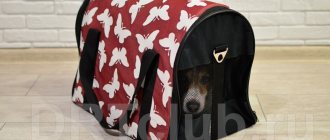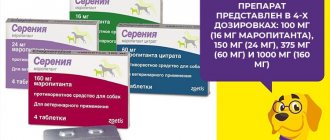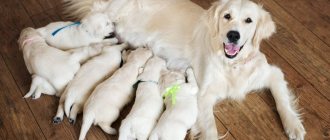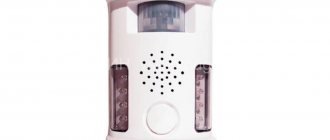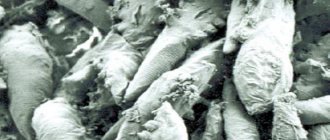What is agility
Agility for dogs began in the 70s of the last century in Great Britain. On February 10, 1978, the first obstacle course competition was demonstrated during a break between the main events at the Crufts exhibition, organized by John Varley and Peter Minuel. It is believed that the example for the new sport was the equestrian competitions , of which Varli was a fan. The enthusiastic reaction of the audience gave impetus to holding a repeat competition a year later, and then agility gradually turned into a full-fledged sport for dogs with its own rules and program, the popularity of which went beyond the borders of the United Kingdom and spread throughout the world, including Russia.
Today, agility is a complex of sports competitions that involve quickly overcoming an obstacle course. Both the pet, who performs the exercises, and the owner, who gives commands with gestures and voice and guides his ward, directly participate in the competition, so such events are of a team nature. The basis of this sport is precisely the established contact between man and animal, high-quality and in-depth dog training.
Dog breeds for agility
Agility is a very democratic sport in which dogs of any breed and even mongrels can take part. You do not need to present any documents confirming your pedigree to participate in competitions. The main requirement for a dog is the ability and desire to carry out the orders of its owner. In addition, to successfully overcome obstacles, it must be light, flexible and quick. Young and adult healthy dogs are allowed to compete (with the exception of pregnant ones), but agility classes are recommended for pets older than 1 year, since their backbone is already formed and the risk of injury during exercise is significantly reduced.
What breeds are suitable for agility? Although technically any dog can participate in competitions, not every pet exhibits the qualities necessary for this sport. The most popular dogs are herding breeds (border collies, shelties, Australian shepherds, etc.), since historically they have spent a lot of time with people in team work and have developed the closest contact; they are easier to train. However, this does not mean that other dog breeds are not suitable for agility - all pets are individual, so the success of training depends not only on their innate qualities, but also on the owner’s ability to unleash the potential of his ward.
In agility, division is accepted depending on the height of the dog at the withers. Typically, these are the following three categories:
- S (small) - for dogs whose height at the withers is less than 35 cm;
- M (medium) – for dogs from 35 cm (inclusive), but less than 43 cm;
- L (large) – for dogs from 43 cm at the withers and above.
In each category, there are the best breeds for agility, distinguished by the most optimal set of necessary qualities. Animals of different categories never mix with each other either during training or competitions, since obstacles of different heights are installed for them. In class S, Spitz are most often used, in class M – sheltie, in class L – border collie. The latter are considered the fastest, and therefore many breeders try to breed smaller dogs of this breed to participate in S and M class competitions. The competitions themselves take place in an increasing order - first animals of class S participate, then M and finish with L, while the height of the obstacles increases.
Features of construction
The foundation of such a structure is mainly concreted and covered with crushed stone. The back and side walls are made blank. The other three are made of gratings, rods or meshes. There must be a gate with a shutter so that you can feed the dog and wash the area. In the middle, 2 places are installed: one for overnight stay (kennel), and the other for food (feeder). In order for your four-legged companion to feel safe and comfortable, the following requirements are imposed on do-it-yourself dog enclosures:
- Consider the size of the pet. Animals up to 70 cm need an area of 5-8 square meters. m, and for larger ones - from 10 m².
- It can be open type (2 or 3 mesh walls) to ensure good ventilation. For regions with cold climates, closed-type sites are made, where only the front wall is open.
- The removable roof is made from durable roofing material.
- For the floor, exclusively dry planed boards are used.
- The gate for the owner should be his height or 15 cm less, so that only his head can be tilted when entering. It should open inward. A secure lock is required.
- The size of the feeder corresponds to the needs of the animal (2 pcs.). It is better to fix the containers by attaching a mechanism for rotation.
- The booth is built in a small size so that the pet can lie, sit and turn freely. A warm covering is laid on the floor.
Since it is sometimes necessary to make an enclosure for a dog in an apartment, you can use improvised materials. For example, make a fence from slats or mesh. At the same time, attach it to one of the walls of the apartment. Much depends on the wishes of the household members themselves.
Animals need to be walked from time to time. They should run and frolic. Otherwise, the muscles atrophy and the blood stagnates.
Types of obstacles in agility
The competition course is a complex of sequentially located obstacles. The rules may establish different sizes of agility equipment, angles of inclination and other parameters. At the same time, their general form and principle of operation remain unchanged. Depending on the nature of the interaction between the dog and the obstacle, agility equipment is divided into the following types.
Contact obstacles
Such agility obstacles require the presence of zones of direct contact with the dog’s body:
- The slide consists of two shields connected at an angle, raised at the top 1.5-2 meters above the ground. The contact zone of the obstacle is painted yellow or red, and transverse strips are fixed on its surface to make it easier for the dog to move. To get a dog over a hill, the handler usually uses the commands “Hill!” or “Home!”
- The swing is made in the form of a board that rotates around the base as the dog moves from one end to the other. In order for the animal to run up an obstacle, the balance of the shield shifts slightly towards one of the ends. To overcome a swing with a dog, domestic trainers use the command “Swing!”
- A boom is a type of slide in which a horizontal board is located between inclined surfaces. It also has a yellow or red painted contact area and cross strips. At this obstacle, the handler gives his dog the command “Boom!”
- The tunnel is made in the form of a barrel-shaped short hole, to which a long fabric part with an open end is attached (soft tunnel), or a rigid pipe of a straight and winding shape (hard tunnel). In both cases, the commands “Tun”, “Tut-Tu” or “Bottom” are usually used.
Jumping obstacles
To overcome such obstacles, the dog must make a high or long jump:
- The usual barrier consists of two vertical posts with an easily knocked down bar located between them. The dog must jump over it on the command “Hop!”, “Bar”, “Jump!” or "Up".
- A ring is a type of barrier in the shape of a circle (tire, hoop) mounted in a frame on a support. The dog needs to overcome it by jumping through the hole on the command “Tire!” or “Circle!”
- The dog performs a long jump through several parallel benches (platforms), without touching any of them with its body or paws. At this obstacle, the handler uses the commands “Hop!”, “Bar!”, “Jump” or “Up”.
- The double barrier is also a variation of the usual one, but consists of two parallel bars. To jump, the dog is given the command “Hop!”, “Bar!”, “Jump” or “Up”.
- The barrier fence is made in the form of a solid wall, on the upper edge of which there is an easily knocked down pad that prevents injury to the dog. To overcome this obstacle, the same commands are usually used as for other barriers - “Hop!”, “Bar!”, “Jump” or “Up”.
Other obstacles
This group includes projectiles with which the dog interacts in various ways:
- Slalom is a series of 12 racks located on the same line, through which the dog must run in a “snake”, going around each one. For this task, the handler commands the pet to “Trrrrrrr” or “Hop.” If the latter has already been used to overcome a barrier, you need to choose another one - you cannot use the same commands in agility on fundamentally different obstacles.
- A podium (square) is a square platform raised to a height of 2-75 cm with a side one meter long, onto which the dog must run and stop for a time set by the judge (in a sitting or lying position). The square performs the same function as the podium, but is simply performed as a base area fenced around the perimeter.
Agility classes
Today, FCI rules establish two official classes of agility competitions.
- Standard. This class is a classic agility sport that includes all three types of obstacles. For beginner athletes, a platform with 15 apparatuses is used, while for experienced participants their number can reach 22.
- Jumping. A special feature of this class of competitions is the presence of only jumping obstacles and a starting platform. Depending on the specific competition, the agility course may also be supplemented with tunnels and slalom. Due to the absence of contact projectiles that slow down movement, jumping dogs develop the highest speed.
Competitions may also include the following types of agility that are not approved by the International Canine Association.
Joker or jackpot. This competition is divided into two periods:
- during the introduction, the dog overcomes obstacles at the handler’s discretion, earning points;
- Finally, the animal must overcome a series of obstacles selected by the judge in a short time.
The difficulty is that in the second period the handler must not cross the line, which is drawn at a distance of 3-6 m parallel to the obstacle course, thereby he has to control the dog from a distance.
Snooker. Developed on the principle of a billiard game, this type of agility involves overcoming numbered obstacles - three red ones for jumping over with the number 1, and six other types, numbered 2 to 7. The competition is divided into 2 stages:
- at the introductory stage, the dog passes the first one of the red obstacles with number 1 and one of the additional ones with numbers 6-7, then this is repeated with the remaining two main equipment;
- at the final stage, the dog must pass consecutive obstacles numbered 2 to 7 to gain additional points.
Relay race. At this competition, 2-3 teams of handlers with dogs sequentially pass an obstacle course located on the agility site (each with its own section), passing batons to each other.
Competitions
The competitions are held on an area whose minimum dimensions are 20x40 m. The tracks are laid at a distance of 10 m from each other. The length of the obstacle course is from 100 to 200 m. Depending on the competition category, the number of projectiles varies from 10 to 20 pieces. Height – no more than 0.7 m.
The time to complete the route, which will be considered standard, is calculated using the following formula:
length of obstacle course / speed of passage.
The maximum allowable time is determined by multiplying the standard time by 2.
Before the start of the competition, the judges introduce the handlers to the obstacle course, tell them the standard and maximum time, and announce the conditions for passing and the evaluation system.
The competition begins with the handler standing at the starting point and the pet behind the starting line. He should not be wearing a collar or leash.
The owner is prohibited from holding objects or touching projectiles.
The judges give the start, and at their signal the handler commands the dog to start. From the moment the animal crosses the starting line, the countdown begins. And it will end when the dog crosses the finish line.
Agility rules
Before the start of the competition, the handler has the right to familiarize himself with the course without the dog in order to remember the sequence of obstacles and develop the optimal trajectory for its passage. In turn, the judge conducts a preliminary conversation with the participants, where he reminds them of the rules of agility, informs them of the control and maximum time. The dog is first released from the leash and collar for safety reasons.
A handler can start an agility race only after the corresponding command from the judge. Control over the dog is exercised exclusively by voice, gaze and gestures; touching the dog is prohibited. There should not be any objects in the hands of the animal owner.
The goal of agility is not only speed, but also the correctness of the dog’s passage through the course. Accordingly, penalties are awarded for mistakes by the animal and the handler:
- exceeding the control time – 1 point per second;
- passing through the start or finish line – 5 points;
- touching the dog or obstacle by the trainer – 5 points;
- knocked down obstacle – 5 points;
- the dog’s refusal to overcome an obstacle or its incorrect passage (for example, running over a long jump apparatus) – 5 points, while the handler can return and overcome the obstacle correctly;
- absence of the dog touching the contact zones at the entrance and exit from the obstacle – 5 points.
The judge also has the right to remove the dog and handler from the course for the following reasons:
- inappropriate attitude towards a judge;
- rough treatment of the dog;
- violation of the sequence of passing obstacles or skipping them;
- 3 refusals of the dog to pass the obstacle;
- exceeding the maximum time;
- the presence of any objects in the hands of the handler;
- disobedience of the dog to the handler (from disobedience to commands to direct aggression);
- unauthorized termination of work as a handler and some other reasons.
Agility competitions vary in difficulty level:
- Agility/Jumping-1 only for dogs without an “Agility Certificate”;
- Agility/Jumping-2 is open to dogs with an “Agility Certificate”;
- Agility/Jumping-3 is only for dogs that have won prizes at Agility-2 3 times
The “FCI Agility Certificate” is awarded to dogs that have received the “Excellent” rating three times in Agility 1 for completing the course without penalty points in the presence of two different judges.
Agility equipment
The article outlines and describes the standards for equipment used for dog sports - agility. The Gilda school does NOT sell agility equipment !
Agility is a competition open to all dogs. The essence of the competition is for dogs to overcome various obstacles without mistakes, and to develop the dogs’ intelligence and agility. This sport requires perfect mutual understanding between the trainer and the dog, so competitors must be familiar with the elements of training and the basics of obedience. Obstacles are installed on the route, the location of which determines its difficulty and speed. The distance must be covered by the dog within the specified time, and the obstacles must be overcome in the correct order.
| Descriptions of projectiles against this background are quoted according to the FCI Rules, which are in force since January 1, 2002. Attention! Some sizes shown in the pictures are for category L . | Against this background, descriptions of the same implements from the IAL Agility Rules are given. In most cases, these rules do not contradict the FCI rules, but complement them and make them more understandable. | Against this background, A. Gility’s comments are placed, based on his own virtual knowledge in the field of agility and the opinion of authoritative trainers. |
Barriers
| Single Height: L : 55 - 65 cm M : 35 - 45 cm S : 25 - 35 cm Minimum barrier width: 1.20 m Barriers can consist of crossbars (metal and plastic crossbars are not recommended), blank boards, gratings, rods and etc. The top bar or board should fall easily. Double hurdles A double hurdle consists of two single hurdles (only hurdles with a crossbar are used) placed one behind the other. The first crossbar is installed 15 - 25 cm lower than the second. The second crossbar is installed at the following level: L : 55 - 65 cm M : 35 - 45 cm S : 25 - 35 cm The depth of the obstacle should not exceed: L : 55 cm M : 40 cm S : 30 cm | Single A single barrier and a barrier with posts are used. Height 650 mm ± 50 mm. Width not less than 1200 mm. The top bar or block should fall easily. The rod barrier and wall must have top elements that fall easily. The height of the barrier posts is at least 1200 mm. The recommended crossbar diameter is from 20 to 50 mm. Double barrier with crossbars Two single barriers are used, installed closely behind each other. The top bar of the first of them must be at least 100 mm lower than the top bar of the second, the maximum distance between the barriers is 650 mm. Barrier made of rods Not used in IAL. | Agility competitions are a holiday for athletes and spectators. Therefore, it is advisable to paint barriers (like all other projectiles) in bright, cheerful colors. If you don’t yet have a sponsor who insists on using “paws”, “bones”, “flowers” and other “bows”. Barrier crossbars with a wide transverse stripe look good. Such crossbars are also more visible to dogs. White crossbars are beautiful, but difficult to see in the snow in winter. According to my observations, dogs do not see brown slats well. You need a lot of barriers. A good set that allows you to set up modern tracks must have at least 12 barriers; they can be different in design and color. |
Wall
| Height: L : 55 - 65 cm M : 35 - 45 cm S : 25 - 35 cm Minimum width: 1.20 m, thickness about 20 cm. This obstacle may have one or two arch-shaped holes. Easily falling elements of the following shape should be installed on the upper plane of the wall: | The wall, bone barrier and viaduct are not used, although they are recognized as “international” agility obstacles and are not included in course design for IAL purposes. | Since the wall, usually made of plywood, has a large windage, it is advisable to artificially weight the structure. "Brick" coloring is beautiful, but not necessary. But the alternation of large blue and white blocks confuses many dogs. |
Table
| Minimum size: 90 x 90 cm, maximum size: 1.20 x 1.20 cm. Height: L : 60 cm; M and S : 35 cm The table must be stable and have a non-slip surface. An electronic timer can be built into the surface of the table, beeping five seconds after starting. Such a timer must be installed at least ten centimeters from the edge of the table. | The table is not used, although it is recognized as an "international" agility obstacle, and for IAL purposes is not included in course design. | Not a single table with an electronic timer has been seen in Russia yet. A rough surface is a very important property of a table. One of the simple and effective ways to create such a surface is described in the “Adventures” section (Where do the projectiles come from?). |
Boom
| Height: 1.20 - 1.35 m Length of ladders: 3.60 - 4.20 m, width - 30 cm. To prevent slipping and make it easier for the dog to work on an obstacle, the entrance and companionway ladders must have slats installed at equal distances from each other friend (approximately every 25 cm), but not less than 10 cm from the beginning of the contact zone. The width of the slats is 2 cm, the thickness is 5 - 10 mm. The slats should not have sharp edges. The bottom 90 cm of the entrance and companionway ladders should be painted a different color (both the top and side surfaces of the ladders are painted) to indicate contact areas. | The boom consists of three ladders of equal length (from 3660 to 4270 mm) and width from 254 to 305 mm. The horizontal drain should be firmly installed at a height of 1350 to 1400 mm above the ground. All ladders must have a non-slip surface. The lower 914 mm of the side ladders should be of a contrasting color (both the surface of the boom and its edge are painted) to indicate the contact area. On side ladders, slats must be reinforced at a distance from each other, but not in the upper 150 mm of the contact zone. The recommended cross-section of the slats is 12 x 19 mm. | The slats alone are not enough for the dogs to work confidently on the boom. Its surface should be as rough as that of the table. Inclined ramps should not sag or sway even under the weight of large dogs. Use metal (duralumin) profiles or additional supports. |
Swing
| Length of the ladder: 3.65 - 4.25 m, width - 30 cm. Height of the central support of the swing when measured from the ground: 1/6 of the length of the ladder. For example: length = 3.65 m, height = 60 cm; length = 4.25 m, height = 70 cm. Contact zones: the same as on the boom. This obstacle must be stable and the ladder must be non-slip. However, the use of slats is not permitted. The swing should lower 3 to 4 seconds after a 1 kg weight is placed at the end of the obstacle. If this does not happen, they need to be adjusted. | The swing consists of a ladder (usually a heavy construction board) 3660 to 4270 mm long and 254 to 305 mm wide, firmly mounted on a central support 610 to 760 mm high above the ground. The outermost 914 mm on each side of the swing should be a contrasting color (both the surface of the swing and its edge are painted) to indicate the contact area. The swing must have a non-slip surface. As a rule, slats are not used, but if they are used they should not be located in the upper 150 mm of the contact area. | Don't forget about roughness (see table). During competitions, the swing tends to bounce from its original position. It is necessary either to make the support heavier, or to provide for fastening the support to the ground. Proper balancing of the swing (not an activity for the faint of heart) is very important; it is necessary to ensure that the swing “returns” gracefully to its original state. |
Slide
| It consists of two slopes installed in the shape of the letter “A”. Width: at least 90 cm, can increase downwards to 1.15 m. The ridge of the slide should be located at a height of 1.90 m from the ground (the angle between the slopes is 90°) for category L arge and 1.70 m (the angle between the slopes increases accordingly). slopes) for the categories M edium and S mall. To prevent slipping and make it easier for the dog to work on the obstacle, both slopes of the slide must have slats installed at equal distances from each other (approximately every 25 cm), but not less than 10 cm from the beginning of the contact zone. The width of the slats is 2 cm, the thickness is 5 - 10 mm. The slats should not have sharp edges. The bottom 1.06 m of each slope should be painted a different color (both the top and sides of the ladders are painted) to indicate contact areas. The slide ridge should not pose a danger to the dog; if necessary, it should be closed. | The slide consists of two slopes 2743 mm long, connected at an angle of 90°, with its ridge located approximately 1940 mm above the ground. The width of the slope is from 900 to 1000 mm. The bottom 1067 mm of each slope should be a contrasting color (both the surface of the slide and its edge are painted) to indicate the contact zone. Both slopes must have a non-slip surface and anti-slip slats, and the slats must not be located in the upper 150 mm of the contact area. The ridge of the slide should not pose a danger to the dog. The slide's transverse fasteners must be at least 600 mm above the ground so that a hard or soft tunnel can be laid under the slide. The recommended cross-section of the slats is 12 x 19 mm. | I’ll say again about roughness - there’s never too much of it. The coloring of the contact areas (this also applies to the boom and swing) should be quite dark. On a white background (such as the one at the 2001 World Championships in Porto), it is very difficult for judges to fix the paw of dogs with white paws (often found in fast border collies). Slides are usually quite stable; their main drawback is that they are difficult to carry and install. |
Slalom
| Number of posts: 8, 10 or 12. Slalom posts must be rigid and have a diameter of 3 - 5 cm. The height of the posts is 1 - 1.20 m, the distance between them is 50 - 65 cm. At the World Championships, the distance between the slalom posts must be 60 cm. | The slalom consists of 12 posts mounted at a distance of 550 mm ± 50 mm from each other. The minimum height of the racks is 950 mm, diameter is from 20 to 40 mm. | For training purposes, I recommend using a slalom with 12 posts and a distance of 60 cm between them. In the USA, 6-post slalom is often used. |
Hard tunnel
| Diameter: 60 cm. Length: 3 - 6 m. The design of the rigid tunnel should allow one or two bends to be formed. | Diameter from 600 to 800 mm, length from 3000 to 5000 mm. A rigid tunnel must be flexible so that it can be formed into one or more bends. | For handicraft production, we can recommend TEZA fabric, which is sold in tourist equipment stores. To fix the tunnel, you must have special guy wires or weights. |
Soft tunnel
| It has a hard entrance with a depth of 90 cm. Entrance height: 60 cm, width 60 - 65 cm. The exit from the tunnel is made of soft material. Exit length: 2.50 - 3.50 m, diameter - 60 - 65 cm. If the tunnel exit is attached to the ground, the fasteners should be located at a distance of no more than 50 cm from each other to ensure free exit from the tunnel for a dog of any size. | Total length from 3000 mm to 5000 mm. The fabric part should be cylindrical and made of a non-rigid material (lightweight fabrics are recommended). The exit must be weighted. The tunnel entrance is a rigid structure of at least 600 mm in length, which can be anchored to the ground. The minimum height of the tunnel entrance is 500 mm, recommended - 550 mm, entrance width - 600 - 800 mm. The entrance must have a suitable covering (rubber mat, etc.). If there is a “floor” at the entrance, it should have a non-slip surface. | The fabric must be dense and heavy enough, otherwise the dogs will get tangled. We can recommend sewing a composite sleeve - the lower part is made of TEZA fabric, and the upper part is made of lighter “tourist” fabric. The hard entry must be quite heavy, or additional weights must be used. |
Tire
| Hole diameter: 38 - 60 cm. Height of the center of the hole above the ground: L : 80 cm M and S : 55 cm The height of the tire is adjusted using chains and ropes; fixed (rigid) fastening is not allowed. For safety reasons, the bottom half of the tire must be filled. The base of this obstacle must be at least 2 m long (1 m on each side of the tire). | The tire hole diameter is from 400 to 600 mm. The center of the hole is 800 mm above the surface level. There should be no gap between the edges of the tire, so they should be sewn, glued or filled with something. The height of the tire must be adjusted by a system of chains or ropes; rigid fastening is not permitted. The frame of the tire must be stable enough to prevent the dog from knocking over the obstacle, regardless of the direction in which it is moving. The minimum frame height is 1500 mm. Tire height does not change over the course of a class run, regardless of the competition standard. | It is convenient to use chains for suspension - it is easy to change the height. The bad thing about elastic suspension is that the tire oscillates for a long time after the dog jumps. Do not use tires thinner than motorcycle tires. For aesthetic reasons, it is advisable to paint the tire in a bright color, but not white (hard to see for dogs). |
Long jump
| Consists of 2 - 5 elements. The total length is: L : 1.20 - 1.50 m (4 - 5 elements) M : 70 - 90 cm (3 - 4 elements) S : 40 - 50 cm (2 elements) Barrier width: 1.20 m. The long jump elements are installed in an ascending sequence, from the lowest element (15 cm) to the highest (28 cm). Depth of elements: 15 cm, height increases. At the corners of the long jump, posts with a height of at least 1.20 m are installed (the posts must not be attached to the barrier elements). If necessary, the top ends of the posts should be covered to protect the dog and handler. | From two to five horizontal strips with an inclined upper part, width from 150 to 300 mm. The number of slats is proportional to the size of the obstacle. The slats should be spaced apart to provide a barrier 1300mm long. The minimum length of the slats is 1000 mm, the maximum height is 250 mm. The corners of the barrier are marked with posts with a height of at least 1200 mm. | The coloring is not necessarily two-tone (as in the picture). The main thing is that the color is clearly visible against the background of the site. A good base for corner posts is obtained by pouring cement mortar into a plastic bowl. |
We recommend a dog sport - agility, if your dog is very energetic and lacks exercise, as an additional solution to some behavior problems. The following dog breeds are best suited for this sport: herding breeds (border collies, various shepherds, shelties, etc.), various terriers, and mixed breeds. But in general there are no breed restrictions for this sport.
Similar articles
- Correcting a dog’s behavior: how can a consultation with a zoopsychologist help?
- Dog training courses: why is it necessary?
- Formula for success in dog training
- Online consultation with a zoopsychologist
- Raising dogs in Israel
How to start agility training
Before teaching a dog agility, it is necessary to instill in it the basics of obedience, that is, the skills to perform basic commands - “Sit!” , "Lie!" , "Stand!" etc. This way you will establish closer contact with your pet, teach him to understand voice commands and gestures. After this, you can conduct agility training yourself.
Classes can take place both at home using purchased or homemade equipment, and in cynological schools. The second option is preferable, since your dog gets used to following commands not only in a calm environment, but also in the presence of extraneous stimuli in the form of other dogs and people. And at the same time, you have a unique opportunity to communicate with like-minded people and learn from their experience. As a rule, amateur classes take place 1-2 times a week and last 3 or more hours. The price for agility in Moscow in most cases does not exceed 500 rubles per lesson.
Classes must be structured so that the pet finds it interesting. Remember that for a dog, agility training is not a duty, but entertainment, a way to release its overwhelming energy. Vary the tasks and make changes - this will help prevent your pet from becoming bored with the exercises and prevent their rejection. In addition, at first, try not to show the animal your annoyance and under no circumstances hit him for passing the projectile incorrectly . On the contrary, actively praise and encourage correct behavior and simply ignore incorrect behavior. This will help your dog develop a positive attitude towards training and look forward to it.
If you want to get acquainted with the detailed rules of the competition, requirements for animals and their owners, want to clarify at what age a dog can train in agility, etc., use the information from the official website dedicated to this sport in Russia, or contact to your nearest dog training center. Remember that the most important thing is not achieving victories, but the feeling of complete unity with your four-legged friend.
What it is
A modern type of sports competition for dogs and their owners, which appeared in the 70s of the last century in England and quickly gained popularity in all countries of the world, this is what agility for dogs is . In fact, at its core, agility competitions are very reminiscent of the animal training process adopted by Soviet dog breeders clubs under DOSAAF, namely OKD training.
The essence of an agility competition is that the owner guides the animal along a course consisting of a number of different obstacles. During the passage, both speed and cleanliness of work are important, that is, accuracy in overcoming obstacles.
The animal should not “work” for a reward or follow a toy or other lures. The owner can only direct the dog using voice commands and gestures; a whistle cannot be used either. All this is completely similar to what happened at the training sites for the “General Training Course” under DOSAAF.
Where can you learn agility in Russia
| City | School name | Contacts |
| Moscow | Canine | +79161564436 |
| Moscow | Canine | +79261766641 |
| Moscow | Kennel club "Rublyovka" | +79152000705 |
| Moscow region | Canine training | +79165216556 |
| Saint Petersburg | Association for the Development of Cynological Sports (ARKS) | [email protected] |
| Permian | Rudashevsky School of Agility | +79226406235 |
| Tver | TRFKS | +79108365246 |
| Samara | SOOO TsLS Image Dog | — |
| Kazan | Federation of Sports and Applied Dog Breeding of the Republic of Tatarstan FSS RT | +79053100383 |
| Rostov-on-Don | RROO FKS | +79281459527 |
